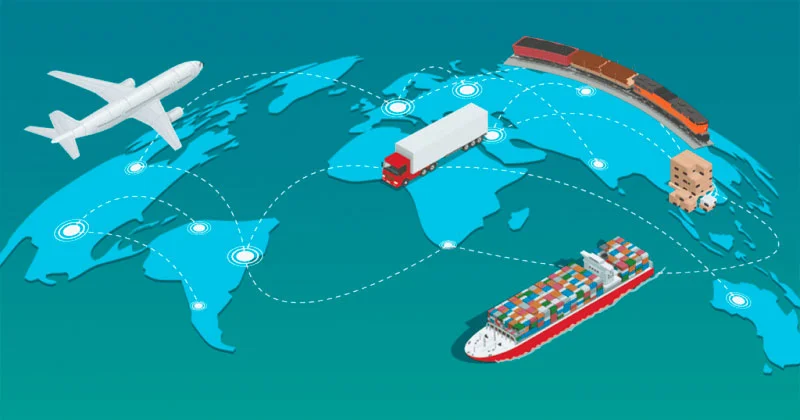Scalability, however, refers to a system’s, network’s, or process’s capacity to deal with growing quantities of labor or to be expanded in a wide range of ways. A scalable system may be scaled up by growing processing power, storage capability, and bandwidth. Vertical cloud scalability, or a “scale-up,” entails including more sources like RAM, CPU, or storage to reinforce the capabilities of current situations or nodes. Rather than adding https://thetimeson.ru/2023/08/24/republican-debate-winners-and-losers-each-candidates-rating/ extra nodes, vertical scaling simplifies each system upkeep and administration by consolidating power within a smaller quantity of more potent machines. Scalability and elasticity could be achieved on AWS using various providers and instruments.

Pactera’s Cloud Platform, Pactcloud Offers Options With The Mixed Would Possibly Of Companions
When traffic subsides, you’ll be able to release the useful resource — compare this to letting the rubber band go slack. Achieving cloud elasticity means you don’t have to meticulously plan resource capacities or spend time engineering within the cloud surroundings to account for upscaling or downscaling. Intelligent elasticity techniques will adjust resources based on demand and analyze historic knowledge, tendencies, and consumer behavior to foretell future spikes and adapt accordingly. These predictive capabilities will further optimize useful resource allocation and reduce prices. Elasticity is your go-to solution when handling workloads as unpredictable because the weather. By routinely scaling sources up or down, elasticity helps maintain optimum performance without unnecessary prices, making it a recreation changer for companies coping with unpredictable or variable workloads.
Speed Up Business Growth With Centizen’s World-class Know-how Consulting Providers

Cloud elasticity is a function that enables a system to scale mechanically in response to demand for assets. In the context of public cloud environments, customers are capable of buy capacity on-demand, and on a pay-as-you-go basis. As the visitors then falls away, these additional virtual machines can be routinely shut down. All these mechanisms give the architecture of the infrastructure the necessary scalability to accommodate the workload appropriately. The reality is that we talk so much about scalability and elasticity today by way of digital transformation and cloud computing. The query is whether they indicate the same thing or if they’re completely different from each other.

Creating User-friendly Interfaces For Healthcare Functions
DevOps, a mix of Development and Operations, has considerably influenced elasticity and scalability in cloud computing. This integration-driven strategy fosters frequent adjustments, improved reliability, and an accelerated pace of work in software improvement. AI’s role in facilitating scalability in cloud computing can’t be overlooked either.

When Is Cloud Elasticity Required?
However, containers excel in this sphere by enabling granular management over assets. Being small-scale by design means they will spawn sooner and devour less reminiscence – thereby resulting in unprecedented ranges of rapid elasticity in cloud computing. Next on our journey via scalability’s benefits is enhanced flexibility and business adaptability. With scaling capabilities at your fingertip, adjusting current infrastructure and providers primarily based only on current requirements comes straightforward. This feature empowers your business by expeditiously responding to adjustments available within the market panorama or sudden growth spikes.
But some systems (e.g. legacy software) usually are not distributed and perhaps they’ll solely use 1 CPU core. So despite the fact that you’ll be able to improve the compute capability out there to you on demand, the system can not use this extra capability in any shape or type. But a scalable system can use elevated compute capability and handle extra load without impacting the overall performance of the system.
AWS, Microsoft Azure, Google Cloud, or other suppliers can simply ramp up servers to stream the thrilling conclusion to your expensive Superbowl ad. On the other hand, on-premises IT could be inherently much less environment friendly if it had to keep capability sitting idle, just in case Dr. Oz had been to make point out of your product on air, driving tens of millions of orders overnight. Businesses are investing heavily in cloud computing sources, and professionals with the proper set of skills are much in demand. DevOps methodology and cloud solutions are two key trends and the future in terms of digital transformation of companies.
This sensible adaptation ensures resources are properly spent during quiet periods and manageable during spikes in demand. Businesses are turning to the cloud in rising numbers to take benefit of increased velocity, agility, stability, and security. Additionally, the business saves on IT infrastructure and sees different capital and house savings from turning to an exterior service provider. Vertical scaling is the process of increasing the capacity of a single node in the system and in contrast, horizontal scaling is the addition of more nodes to the system.
- The “elastic” nature of a cloud environment ensures each uninterrupted companies and most value efficiency.
- By clicking “Post Your Answer”, you agree to our phrases of service and acknowledge you’ve read our privateness policy.
- Traditionally, digital machines had fastened sizes – making micro-level resource allocation tough.
It supplies entry to a giant pool of resources that might be scaled up or down as needed. A related idea to cloud scalability is cloud elasticity, which is the system’s capability to broaden and contract based mostly on workload calls for. While the two ideas sound like the same thing, the key difference between cloud scalability and cloud elasticity is time. Cloud computing has brought important changes in how businesses function, and one of the necessary advantages of the cloud is scalability. Scalability refers to the capability of a system to adjust and adapt to the varying calls for of a computational course of. This signifies that businesses can easily and quickly modify their computing assets to satisfy the demands of their workloads without the necessity for expensive and time-consuming hardware upgrades.

In a scalable system, the system could be made larger or smaller as wanted to meet the changing calls for of the workload. Elasticity is used to describe how properly your structure can adapt to workload in real time. For example, if you had one user logon each hour to your web site, then you’d actually only want one server to handle this. However, if all of a sudden, 50,000 users all logged on at once, can your architecture quickly (and presumably automatically) provision new net servers on the fly to handle this load? Ultimately, the best alternative is dependent upon the organization’s distinctive wants, priorities, and constraints. In many instances, a mix of elasticity and scalability may be the simplest resolution to ensure optimum performance, price efficiency, and reliability in a cloud surroundings.
With elasticity built in, IT organizations can resist costly overprovisioning for “just in case” scenarios and as an alternative draw on—and pay for—those assets solely when they’re needed. It goes without saying that Automation Tools play a giant half in enabling elasticity and fault tolerance. The monitoring instruments can detect the higher CPU usage and automation kicks in to provision extra compute assets. Both of these terms are important features of cloud computing methods, but the performance of each the words usually are not the identical. Let’s say you are the supervisor of a pizza supply enterprise, and you’re making your worker schedule for the approaching week that features Super Bowl Sunday. Of course, there will be far more orders placed on the day of the large game than on a median Sunday.
With our use of S3, this is non-issue as a end result of all clusters have instant entry to the complete dataset. The question cluster could be smaller at night time when there are fewer developers logged in, whereas the production cluster should be larger at evening, when most of our ETL(extract, transform, load) is run. Not all AWS providers help elasticity, and even those that do usually must be configured in a sure means. Long-term technique aligns along with your organization’s growth plans, and a combination of both approaches may be the simplest resolution.
